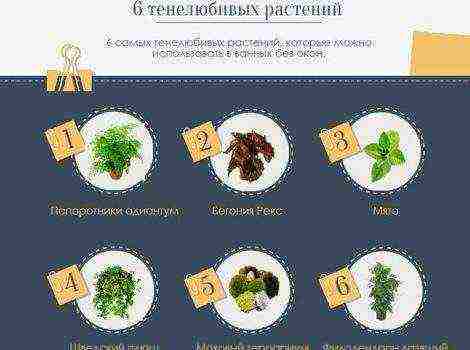Content
- 1 How to make money on the production of Ivan tea
- 2 Production technology
- 3 Equipment and workers
- 4 Registration of activities and declaration of products
- 5 Sales organization
- 6 Profit forecast
- 7 Growing from seeds
- 8 Vegetative growing method
- 9 Care features
- 10 Features of ivan tea
- 11 Growing ivan tea (fireweed)
- 12 Ivan tea care
- 13 Collection and storage of Ivan-tea
- 14 Properties of willow tea: harm and benefit
Narrow-leaved fireweed, popularly called Ivan-tea, is a unique plant, the beneficial properties of which are taken care of by nature itself. It is rich in B vitamins, ascorbic acid, iron, calcium, potassium, bioflavonoids and tannins.
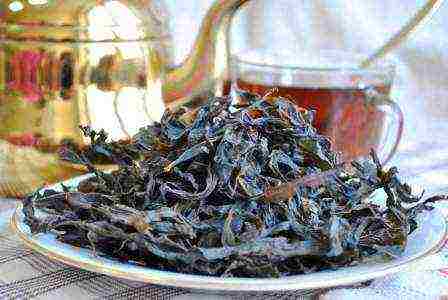
The drink made from the leaves of this plant has anti-inflammatory and analgesic properties, normalizes sleep and tones the body. In addition, fireweed does not contain caffeine, therefore it is considered an excellent alternative to Indian tea, to which it is in no way inferior in taste. Given the growing consumer demand for natural products, the production of ivan tea can be viewed as a relevant business. In this article, we'll show you how to organize it.
Content:
- Ways to make money
- Technological process
- Equipment and personnel
- Documentation
- Implementation
- Potential profit
- Conclusion
How to make money on the production of Ivan-tea
Fireweed grows freely in the wild. Its most common habitat is the coniferous forests of the European part and Siberia. The plant can be found on dry sandstones, in clearings and forest edges, near crops and near water. Its interesting feature is that it is the first to populate forest and field areas after fires.
Given the wide distribution of willow-herb in nature, you can collect it by hand yourself, harvest it using improvised means and sell it in small batches. With a certain skill, a picker can harvest about 20-25 kg of tea leaves in one day. However, these are too small volumes to speak of serious profits.
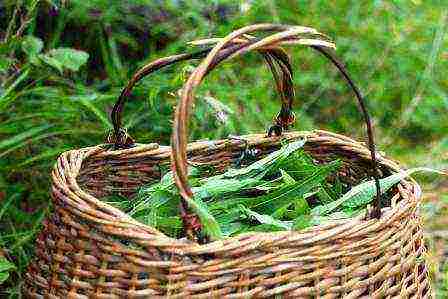
Another option is to buy raw materials from the inhabitants of villages and villages by prior arrangement, then independently process and sell them. But there are also disadvantages here: the lack of control over the collection of leaves can lead to a violation of the technology, as a result of which the raw material will lose its useful properties and taste.
The best option is to grow Ivan tea as a business on a plot of land (own or leased) with subsequent processing and sale. Only by organizing a full-cycle enterprise, you can get high-quality products in large enough volumes that will provide a high income.
The team of the World of Business website recommends that all readers take the Lazy Investor Course, where you will learn how to put things in order in your personal finances and learn how to get passive income. No enticements, only high-quality information from a practicing investor (from real estate to cryptocurrency). The first week of training is free!
Register for a free week of training
Production technology
Fireweed propagates both by seeds and vegetatively. Seeds are collected in September. Each stem is capable of producing 20,000 to 40,000 seeds. Seeds are planted in grooves no more than 1.5 cm deep, sprinkled with earth and watered from a watering can. The optimal distance between the rows is from 60 to 90 cm. After germination, the plants are thinned out, leaving 1-2 stems every 30 cm.
Saplings are planted in the ground in early fall or spring.With proper care, timely watering, they quickly build up their vegetative mass. Ivan tea is an extremely unpretentious herb. Watering seedlings and seedlings is recommended abundantly only for the first 1-1.5 months. During this period, it is advisable to do this through a watering can or a fine sieve so as not to damage the stems. When plants reach 10-12 cm in height, they can be watered less often - only once a week.

The flowering period of Ivan tea is from late June to mid-August. Just at this time, it is necessary to collect the leaves. This should be done in the morning, when there is no dew on the plants. The leaves are collected in bags and immediately sent for processing.
Interesting! Fireweed is considered an excellent honey plant (from 1 hectare of thickets of this herb you can get 400-500 kg of honey), so the production of tea from this plant can supplement beekeeping business.
Further processing of the collected raw materials takes place in several stages:
- preparation - at this stage it needs to be sorted out, separated from debris, washed and dried;
- withering of leaves in dark rooms or in special dryers;
- fragmentation - leaves undergo special mechanical processing and sap, as a result of which important chemical processes occur;
- fermentation - the resulting mass is laid out on metal or wooden surfaces and left for a while;
- drying in ovens or drying ovens;
- thermal aging - the product is allowed to rest in order to obtain a characteristic aroma and a typical tea shade;
- packing and packaging.
The type of tea will depend mainly on the length of fermentation of the tea leaf. The most popular varieties are fermented (classic black) and low-fermented (green). In addition to the fireweed itself, you can include other aromatic plants in the tea, for example, mint, oregano, lemongrass.
If you consider Ivan tea as a small home business on the territory of your personal subsidiary farm, and the volume of your production will be low, then you can carry out all the basic operations for processing raw materials manually. If you plan to organize a full-fledged enterprise, then you will have to spend money on special equipment.
Equipment and workers
The set of special equipment will consist of the following main components:
- tea leaf cutting machine;
- withering drum;
- roller for twisting;
- fermenter;
- drying unit;
- machine for filling and packaging.
It is better to purchase everything you need from one manufacturer. A good option is to buy a ready-made production line. The price of the issue will be from 800,000 rubles. up to 2,000,000 rubles. depending on the configuration and performance of the equipment.
To work on the plantation during the tea harvest season, you will need several picking staff. The production itself assumes the presence of several workers on the line, as well as a qualified technologist who will develop varieties of tea and control the process of its production. It is advisable to have your own equipment maintenance specialist, driver-forwarder, sales manager on staff.
Registration of activities and declaration of products
The production and sale of herbal tea in small quantities from raw materials grown on our own site does not require official registration of entrepreneurial activity. The law allows the sale of surplus products from personal subsidiary plots without paying taxes.
In all other cases, it is worth contacting the tax service to obtain the status of an individual entrepreneur (IE) or a legal entity. The code of the type of economic activity according to OKVED, under which this business falls - 10.83 - "Production of tea and coffee". Do not forget to indicate it when filling out an application for registration of a legal entity or individual entrepreneur.
In addition to the completed application, a number of other documents must be submitted to the tax office. Read what documents are needed to open an individual entrepreneur. Actual package for 2017.
If you need to register a limited liability company, study the documents required to register a legal entity.
Based on the results of consideration of the application, the employees of the service make a decision and issue a certificate of state registration no later than five working days from the date of application.
The next mandatory step is to obtain a declaration for manufactured products. Its quality and compliance with the standard (Technical Regulations of the Customs Union "On Food Safety") can be confirmed with the help of an accredited certification center. Without a declaration, your goods will not be accepted to any store, so you should not ignore this requirement. If you wish, you can also issue a voluntary certificate, which will serve as an additional confirmation of the high quality of your tea products.
Sales organization
It is difficult for a new manufacturer to immediately enter into large contracts, so the introduction of a product into the market should be started gradually from small retail outlets and private shops. Follow the fairs, exhibitions of natural food in your city and be sure to take part in them. You can also offer herbal teas for sale in pharmacies and sanatoriums. Over time, when the product gains trust, it is recommended to move to large retail chains or open your own branded store.
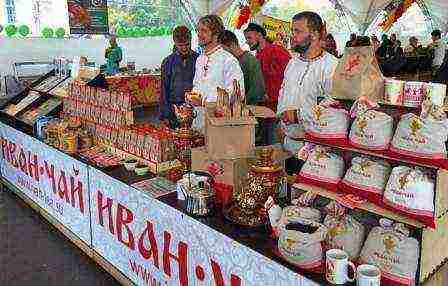
A great way to attract consumers' attention to your product and drive sales is to create an online store and advertise on the Internet. Don't miss out on the opportunities that online trading opens up, as for most entrepreneurs who manufacture such products, online sales are the main source of income.
Read on how to create your online store and what types of advertising are best to use.
Find out if farming is profitable and what ideas in this area are considered promising.
Agribusiness subsidies can be used to purchase expensive production equipment.
Profit forecast
The average retail price for Ivan tea is 250 rubles. per 100 g, the wholesale price varies from 150 to 200 rubles. At the same time, the cost of a one-hundred-gram package does not exceed 100 rubles. This amount includes the costs of growing and processing raw materials, labor costs, taxes, packaging price, depreciation of equipment, etc.
If your enterprise produces about 500 kg of finished products per year, then the possible net profit will be from 250,000 to 750,000 rubles. depending on the implementation method.
An important feature is that the business is seasonal. Collection and procurement of tea leaves can be carried out only for 1.5-2 months a year. Therefore, in order to provide yourself with profit throughout the year, you need to correctly calculate the volume of production and take care of the storage and storage of raw materials.
conclusions
As you can see, you can make money on Ivan tea in different ways. It can be not only a modest home business that brings additional income to the family, but also a small manufacturing enterprise with hundreds of thousands of rubles in annual profit. Prospects for the development of such a business are to expand the range of products and register manufactured goods as dietary supplements with subsequent entry into new markets.
Ivan tea, also known as Koporsky tea or fireweed, is a wonderful plant from which a healthy and tasty drink is prepared. How does it grow in nature and is it possible to grow Ivan tea with your own hands?
Reproduction in nature
Fireweed can be found in different parts of Russia, while the plant loves soils with high mineralization and a minimum of fertile layer. For example, willow tea is often the first to grow in an area where there was a peat or forest fire, thereby increasing fertility and being a kind of soil healer. So fireweed allows other plants to grow, after which willow tea most often dies out.
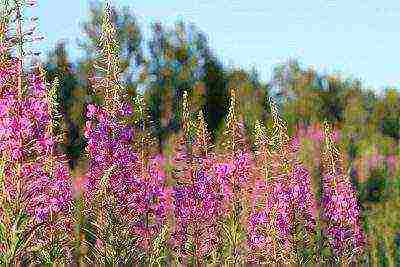 Ivan tea heals not only a person, but also nature itself, restoring the soil after fires
Ivan tea heals not only a person, but also nature itself, restoring the soil after fires
In nature, the plant propagates by seed. The seedlings of Ivan tea are small and attach to the parachute fluffs. They are unusually light, so they are able to travel long distances in the wind. One plant produces up to thirty thousand such seed parachutes.
When the seed is in a favorable place, it gives rise to the growth of a new plant. Subsequently, reproduction takes place not only by seeds - the roots of ivan tea, growing, form large thickets of new plants. Within 5-10 years, willow-tea grows in one place, and its dead shoots begin to form fertile soil in which other plants settle and gradually displace the fireweed.
DIY growing
When wanting to grow Ivan tea in the garden or in the garden plot, it is important to take into account the following points:
- Plant seedlings cannot stand competition with other plant species.
- Fireweed is very picky about lighting - the plant needs a lot of sunlight.
- Ivan tea also needs highly mineralized soil.
- Planting is possible in spring, but it is preferable to plant fireweed in autumn.
- You can either sow willow tea seeds or plant the roots of the plant.
Sowing with seeds
When you are going to plant willow-tea seeds, you have to take some tricks so that light fluffs do not scatter far from your site. For planting, the seeds should be attached to strips of paper (it is optimal to take toilet paper, but you can also use a newspaper) one or two centimeters wide.
 Ivan-tea fluff is its seeds, with the help of them fireweed propagates in the wild Preparation
Ivan-tea fluff is its seeds, with the help of them fireweed propagates in the wild Preparation
After spreading the cut paper on the table, grease it with starch or flour paste, and then use tweezers to attach fireweed seeds to the greased places. When the paste is dry, the strips of paper can be rolled up and secured with an elastic band. It is recommended to do such harvesting of seeds in winter. This is a rather laborious method. For those who want to make the planting process faster, we recommend mixing fireweed fluff with wet sand.
Choosing a place
Next, select a landing site. The ideal option would be a portion of the plot that was previously used for growing potatoes, since the land must be depleted. In addition, the place should be well lit by the sun. As for moisture, the site for willow tea should not be too damp or too dry. It is good if there is a small body of water nearby so that the plant receives a lot of moisture at night.
We clear the soil from grass
Before planting, it is better to treat the soil with special means to clear the soil of grass.
A more extreme method can be used: in the place where the willow-tea will grow, we make a fire before planting, the ivan-tea is the first to grow after the fires. This should be done only on a calm day. You can burn tree branches, old planks, fence and other wood materials. After leveling the resulting coals with a rake, pour sawdust, moss or peat on top - when this layer burns out, you get more ash. The fire will help burn the roots and seeds of other plants so that in the first year the fireweed seedlings have no competitors.
 The bonfire will clear the soil from competitors for fireweed and create conditions favorable for its germination
The bonfire will clear the soil from competitors for fireweed and create conditions favorable for its germination
The next day, on the site, you need to make furrows up to 3 cm deep (we leave 8-10 cm between the furrows), in which to put paper with seeds. Cover everything on top with ash and sand, taken in equal proportions. Use melt water or rainwater to water the seeds. Water the seedlings abundantly, and then keep the soil moist for the first week.
If you don't feel like using paper, you can wet the seeds and mix with sand, then sow in the furrows.
The fireweed sown in April will give seedlings in mid-May, which need to be watered in dry weather. The plant will begin to bloom in 2 years, and will completely fill the site in 3-4 years after planting.
Reproduction by roots
The roots of the fireweed are large, so they are divided into parts from 5 to 10 cm long.
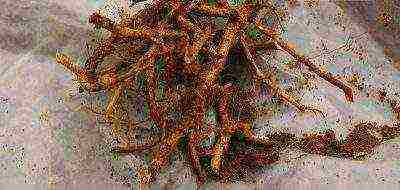
After dividing them into parts, they are planted in the ground to a depth of about 10 cm.Like seeds, the roots are planted in rows to make it easier to remove weeds from the site, as well as to mulch the site when sprouts appear (for this, mowed grass or straw is used, laid out in a layer of 10 cm).
Preparing the soil does not need to be as thorough as when propagating by seeds. The soil should be loosened, and ash should be used to fertilize it. The roots can be dug up in the fall (this is more convenient) or in the spring. With such vegetative propagation, the site will be completely filled with Ivan tea in 2-3 years.

Ivan tea is a herbaceous perennial plant. The people have the name "narrow-leaved fireweed". It is used in both folk and traditional medicine. Serves as anti-inflammatory, antibacterial, diaphoretic and sedative.
Growing ivan tea in the country is becoming more and more popular. The plant is not only medicinal, but also very beautiful. Ivan tea has a straight long stem. The leaves are arranged alternately on small petioles. Medium-sized flowers are dark purple to light pink (almost white) in color.
Growing from seeds

Ivan tea grows up to 1.5 m in height
Seeds of narrow-leaved fireweed can be bought at gardening stores or prepared by yourself. It is best to harvest them in the fall, about 1-2 months after the plant has bloomed. Then they must be dried, freed from the cannon and stored in a dark, dry place for storage.
Sowing willow tea is recommended in early spring for seedlings, since the seeds are small and in the open field they can be blown away by the wind or washed out by rains.
The soil for sowing should be airy, loose. Usually, sand (preferably river), humus and peat are mixed in equal proportions. Seeds are placed on the ground and sprayed abundantly with a spray bottle. Cover the seed box with foil or glass. The optimum temperature for germination is 18-25C. Seedlings appear on 4-5 days.
When the seedlings have 2 true leaves, they dive. In the open ground on the site, seedlings are planted in late May-early June. Before planting, the plant must be hardened for 3-5 days.
Note: fireweed seedlings should be planted in open ground in cloudy weather (it is possible in the rain), from the heat young seedlings can wither and die.
Vegetative growing method

Ivan-tea flowers have a bright color
The easiest way to refine the area with fireweed plants is to dig out the root system and transplant it. Ivan tea grows in the forest thicket and in the clearings. It is better to take plants from open meadows - they will be less whimsical than plants from a deep forest.
When digging up a plant, it should be borne in mind that its root system is large and spreading (up to 1.5 m). It is necessary to dig it out together with a clod of earth - this way it will take root better, and the root system will remain practically untouched.
To transplant the dug out rhizome, you need to prepare a hole. It shouldn't be very deep. It is necessary to add a little humus, sand and ash to it, pour it thoroughly with water. Plant the root in the hole and water again abundantly. A thick layer of cut dried grass or straw (10-15 cm) should be laid on top of the ground.
Ivan tea, transplanted in this way, takes root well and quickly, since it is already adapted to any weather conditions. The rhizome grows rapidly, it multiplies by buds on the roots.Therefore, the root can be divided into several parts (if live buds are clearly visible on it).
Care features
Ivan tea is an unpretentious plant, but there are special conditions for caring for it that must be observed:
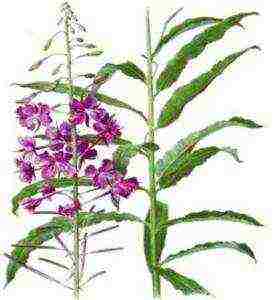
The plant has long narrow leaves
- the plant loves moderate watering. In extreme heat - a couple of times a week (in the morning or in the evening), in cloudy weather - once a month;
- for better growth, the plant should take a place next to buildings or a fence (this way the wind will not break them);
- in the fall, it is necessary to cut the plant, leaving a petiole about 15 cm from the root;
- loosening should be done no more than 1 time per month;
- fertilize with mineral dressings no more than 1 time per season;
- the place for the plant needs a sunny one.
Take note: Ivan tea is growing rapidly. In order for it to grow only in a certain area, it must be fenced underground (dig in sheets of iron or slate around the perimeter, to a depth of 1 meter).
 After sowing or transplanting rhizomes, the plant blooms most often in the second year. Ivan tea blooms profusely for 1-1.5 months. Usually from late June to early August. Then, in place of the flowers, seeds are formed, covered with fluff. In order for the seeds not to scatter over the entire site, they must be cut off in an immature state.
After sowing or transplanting rhizomes, the plant blooms most often in the second year. Ivan tea blooms profusely for 1-1.5 months. Usually from late June to early August. Then, in place of the flowers, seeds are formed, covered with fluff. In order for the seeds not to scatter over the entire site, they must be cut off in an immature state.
Narrow-leaved fireweed is not susceptible to the most common diseases (powdery mildew, black or putrefactive leg, mites, aphids).
Ivan tea ennobles the soil in which it grows, fights many types of weeds. Therefore, we can say that fireweed is useful not only for humans, but also for the garden plot as a whole.
How to grow Ivan tea in the country, see the video:
Rate the article:
(2 votes, average: 5 out of 5)
A herbaceous perennial plant Ivan-tea (Chamerion angustifolium = Epilobium angustifolium), also called Koporye tea, or narrow-leaved fireweed, is considered a type species of the Ivan-tea genus of the Cypress family. This plant popularly has a large number of other names, for example: doyatnik, magpie's eyes, ivan-grass, cypress, blackberry, Virgin's herb, Kuril tea, wild flax, plakun, scallop, weeds, tar, sweet clover, wheatgrass, field sage, etc. Such a plant is found in nature throughout the entire Northern Hemisphere, and it prefers to grow in clearings and forest edges, near water, in light forests, along embankments and ditches, as well as in dry sandy places and on damp ground. It has been noticed that willow-tea appears very first on burnt-out areas and clearings, then, as the site is "filled" with other plants, this culture gradually dies out. Often, willow tea in nature can be found in the immediate vicinity of the raspberry tree.
Features of ivan tea
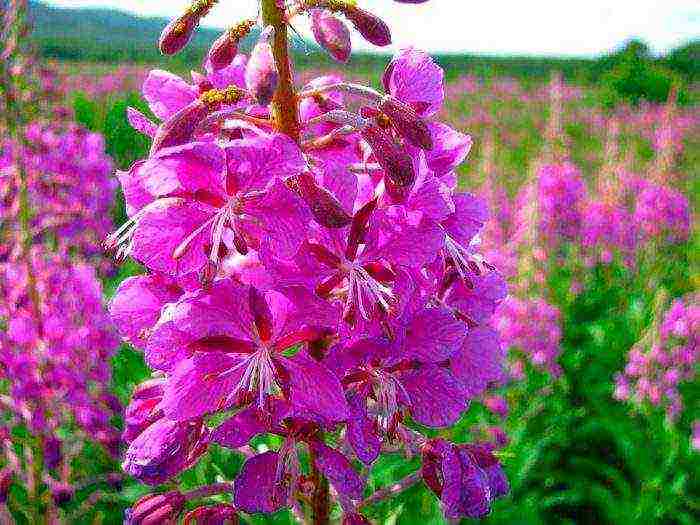
The height of the narrow-leaved ivan tea bush can vary from 0.5 to 2 meters. A large number of additional buds are located on the vertical and horizontal roots of the creeping thick rhizome. In this regard, this culture can be successfully propagated by vegetative methods. The simple, erect, rounded stem is glabrous and densely leafy. Alternately located simple leaf plates can be short-petiolate or sessile, they have a linear-lanceolate shape, tapering to the apex, while to the base - wedge-shaped tapering or almost round. Also, foliage is solid or finely iron-toothed along the edge. Their front surface is glossy and painted in dark green, and the back is red-purple, pinkish or green-gray. The plates are about 12 centimeters long and about 2 centimeters wide. The length of the rare apical racemose inflorescence varies from 0.1 to 0.45 m, it consists of four-membered flowers with a nectar ring around the column, which can be painted white or pinkish.Ivan tea blooms in the second half of the summer period, while the flowering duration is just over 4 weeks. The fruit is a box similar in shape to a pod, inside which there are naked oblong seeds that ripen in the late summer or early autumn.
Ivan tea is grown both as a fodder crop and as a medicinal plant, because people have known about its medicinal properties for a long time. In addition, among all herbaceous plants growing in the forest, fireweed is considered the best honey plant.
Growing ivan tea (fireweed)

Sowing willow tea
For sowing willow tea, you can choose absolutely any site. On this occasion, the people say: both in the field and in the forest to see a burgundy braid. This culture has one feature, it contributes to the restoration and treatment of those soils that are depleted in organic matter, for example, after forest fires. However, after the humus in the soil gradually accumulates, and other plants begin to grow on the places scorched by fire, the fireweed begins to disappear.
Ivan tea is considered a light-loving plant, however, in arid areas, the foliage on the bushes becomes shallow, and they themselves grow low. This must be borne in mind when choosing a suitable place for sowing. Before proceeding with the direct sowing of seeds, the site must be prepared, and for this, an unusual method is used. To do this, along the perimeter, the site must be dug with a strip of loose soil, the width of which should be about 100 cm.After that, a fire should be made on the site, while using for this purpose flown foliage, cut branches, and other plant debris collected in the garden or in the garden ... The resulting coals should be scattered over the surface of the entire area, and on top they should be sprinkled with a layer of dry straw. Under the smoldering straw, all roots and seeds of weeds and other plants burn out and ash appears, which is an excellent fertilizer for fireweed.
The seeds of ivan tea are very light, and if they are sown before winter, then in spring they will be washed out of the soil with melt water. In this regard, sowing should be done in the spring after the snow cover has melted, while the seeds should be combined with sand or glued onto strips of paper. It is necessary to deepen the seeds into the soil by no more than 15 mm, while the distance between the previously made grooves should be from 0.65 to 0.9 m. The grooves are filled with loose soil. Crops need watering, which is carried out very carefully using a watering can with a shower head. It is recommended to water the fireweed with rain or melt water. The seeds of this plant do not have a very high percentage of germination, and the seedlings that appear are gaining strength for a relatively long time. In this regard, the grown bushes will bloom only in the next season. Between the bushes in a row, a distance of 0.3 to 0.5 m should be observed, but if the seedlings grow more densely, then they should be thinned or planted.
Landing in open ground
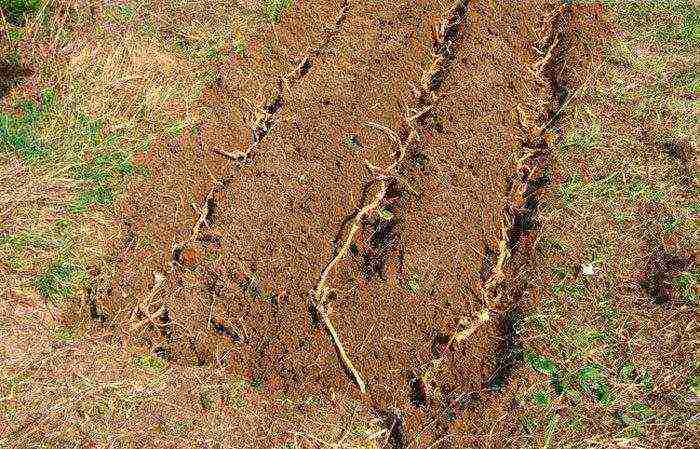
For the propagation of ivan tea, vegetative methods are also used, which are distinguished by their speed and reliability. For this, the method of dividing the rhizome is used, especially since it is not so difficult to grow a plant from stolon roots. Root seedlings grow their vegetative mass much more rapidly, therefore, medicinal raw materials will be obtained in a relatively short time. You can divide and plant root cuttings in the last days of March or the first days in April, as well as in autumn, or rather, in late September or early October. The roots extracted from the ground should be cut into pieces, the length of which can vary from 50 to 100 mm, they should be planted in open ground to a depth of 10 to 15 centimeters, while using the same planting scheme as when growing willow tea from seeds ...So, the distance between the bushes should be from 0.3 to 0.5 m, while the distance between the rows should be from 0.65 to 0.9 m.Immediately after the sprouts appear, the surface of the site must be covered with a layer of mulch, in as which you can use any organic materials, for example: straw or cut grass. The thickness of the mulch layer should be approximately 10 centimeters.
Ivan tea care
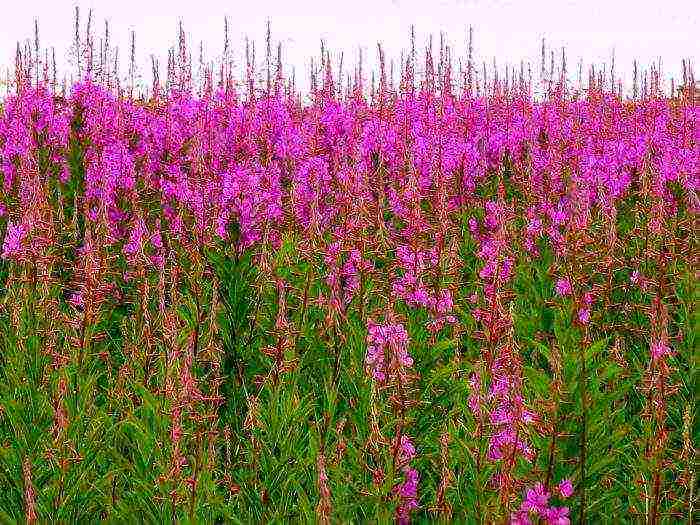
In the first days before the emergence of fireweed, the surface of the site should be constantly slightly damp. After the height of the young bushes is 10 to 12 centimeters, they will need to be watered only once every 7 days. On hot days, watering should be done twice a week. Loosening the surface of the soil near the bushes, as well as removing weeds, should be at least 1 time in 4 weeks. In order to significantly reduce the number of weeding, loosening and watering, the surface of the site must be covered with a layer of mulch, while using only organic materials.
4 weeks after the sprouts appear, ivan tea is fed with a solution of infused chicken manure. And in the last autumn weeks they are fed with mineral fertilizers and ash.
Before wintering, it is necessary to shorten the shoots to 15 centimeters. Then the site should be covered with dried oak or walnut foliage, and you can also use needles. When spring comes, cut off last year's shoots and foliage flush with the soil surface to stimulate new stem and leaf growth.
Ivan tea has a very high resistance to diseases and pests. Bushes can be grown in the same place from 4 to 5 years, after which they must be removed from the soil, divided into parts and planted in a different area.
Collection and storage of Ivan-tea
How to collect Ivan tea

The collection is carried out during the flowering fireweed (in July – August). After the bushes start pushing, they will irrevocably lose all their healing properties. During the harvesting of this plant, it should be harvested, fermented and dried. If everything is done correctly, then you will be able to both preserve and increase the medicinal properties of willow tea.
Choose a sunny day to collect raw materials. The collection is carried out after 10 am, when all the dew has dried on the foliage. If the weather is hot outside, then this procedure is recommended to be performed in the evening. Hold the bush with one hand by the peduncle, while with the other you should grab the shoot and hold it from above to its middle, while all the foliage should remain in your hand. The leaf plates at the bottom do not need to be cut off, as they are very rough. You also need to leave 3 or 4 tiers of foliage under the flowers, since the plant still needs them. Dirty, dusty, and diseased specimens are not suitable for collecting raw materials. And during the collection, you need to try not to injure the shoots. You should also be very careful and avoid getting bedbugs into the raw materials. So, just one such foul-smelling insect can spoil up to several kilograms of raw materials. If desired, you can make a separate collection of flowers, which are recommended to be put in tea.
Drying rules
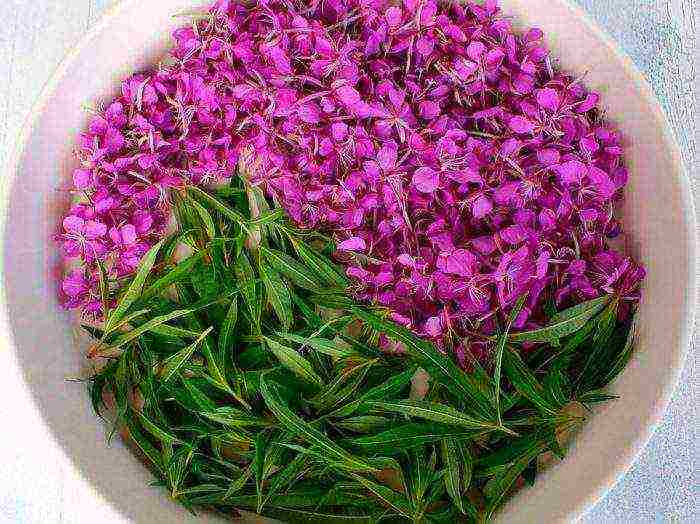
In order for the collected raw materials to begin to ferment, it must be dried. First, sort through the foliage, removing all injured and affected by the disease. After that, it must be distributed in a dark room on a damp cotton or linen towel, while the layer thickness should be from 30 to 50 mm. The room temperature should be maintained between 20 and 24 degrees. The duration of the fermentation process is at least 12 hours, while for uniform drying, the raw material must be regularly agitated. To understand that the fermentation process has come to an end, you need to take one leaf plate and bend it in half.If at the same time you hear a crunching, breaking median vein, this means that the raw material has not yet reached the required condition. Properly dried leaves, when squeezed into a lump, should not straighten.
Fermentation conditions for Ivan-tea
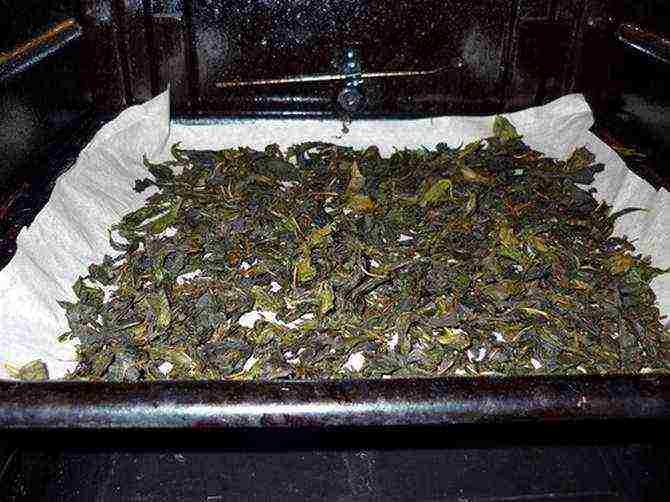
It is necessary to understand in more detail the processes due to which the foliage of fireweed becomes a fragrant medicinal tea. After the leaves have dried properly, it is necessary to destroy the structure of the leaf plates, due to which juice will begin to be released from them, and it contains special substances that contribute to fermentation. In the event that there is an insufficient amount of juice, this will have an extremely negative effect on the fermentation of raw materials, which will not in the best way affect the smell and taste of tea.
Mash carefully all the foliage, while rolling it between your palms. After that, the raw materials should be very tightly filled in glass jars with a volume of 3 liters, which are covered with a damp cloth on top. The raw materials are kept for at least 36 hours, while they are removed to a dark place with room temperature. The raw materials pulled out of the cans should be loosened and dried in the oven, setting the temperature from 95 to 110 degrees, you do not need to close the door. The foliage must be stirred systematically. For storage, ready-made tea is poured into a plastic or glass container, which is tightly closed with a lid. In a dark place, such tea can be stored for about 3 years.
In the event that there is too much raw material, and there is no extra time, then instead of rubbing it with your hands, it is passed through a meat grinder. But then the medicinal properties and taste of the finished tea will not be so strong. The raw material crushed in this way is covered with a moistened cloth on top and kept for 6–8 hours at room temperature. Feel the raw material, if its consistency is similar to soft rubber, then you can start drying. The foliage is placed on a baking sheet in a thin layer. For drying in the oven, set the temperature to 100 degrees, remember that the door cannot be closed, and the raw materials must be systematically mixed. When the drying process comes to an end, the temperature should be slightly increased, in this case, the tea can be calcined (this is done with coffee beans). This helps to improve the color and taste of the tea. To avoid burning the raw materials, the bottom of the oven must be covered with ceramic tiles. The tea mass will dry for no more than 2 hours.
Properties of willow tea: harm and benefit
Useful properties of ivan tea

Leaf plates, shoots, roots and flowers of fireweed are used as medicinal raw materials. The foliage contains ascorbic acid, while it is 3 times more than oranges. They also contain B vitamins, carotene, tannins, pectins, tannins, sugars, macronutrients: magnesium, calcium, potassium, trace elements copper, iron, manganese and other useful substances.
Fireweed has a styptic, enveloping, antipyretic, sedative and anti-inflammatory effect. It is considered a powerful natural antioxidant and purifier. In men, it increases potency. In addition, Ivan tea helps to alkalinize the blood, relieve anxiety-depressive state, painful sensations in the head area (it also helps with migraines), accelerate the processes of hematopoiesis. And it also prevents the degeneration of prostate adenoma into a malignant tumor, helps to normalize blood pressure, strengthen hair roots, slow down the aging of the skin, while they become more elastic and elastic.
Such tea is used for the prevention and treatment of diseases such as anemia, gastritis, peptic ulcer, colitis, enterocolitis, pancreatitis and disorders in the biliary system, infertility, urolithiasis, bronchitis, sinusitis, pharyngitis, tracheitis, pulmonary tuberculosis, spleen pathology, dermatological diseases and metabolic-inflammatory skin diseases.
The taste, aroma and color of Koporye tea directly depend on the quality of the water used. Best of all, such a drink is obtained from spring or melt water. But how to brew tea correctly? To do this, combine a couple of small spoons of tea with 1-2 tbsp. freshly boiled water. After 10-15 minutes. the tea will be ready to drink.This tea is quite tasty and chilled. When warming up a cold drink, you need to remember that in no case should it boil, because because of this, its unique smell will disappear. It is recommended to drink this drink without sugar, but you can use honey, raisins, dried apricots, halva or dates.
You can also brew a similar tea using fresh herbs. At the bottom of the enamel pot, freshly harvested foliage should be laid, while the layer thickness should be from 30 to 50 mm. Melted or purified water is poured into it to a height of about 10 centimeters. The mixture should be heated over low heat. After boiling water, remove the saucepan from the stove and close it with a lid. After 10 minutes, the drink will be ready.
The infusion and decoction from rhizomes and foliage of fireweed also has medicinal properties. This plant is also included in a variety of medicinal herbal preparations.
Contraindications
Ivan tea drink should not be consumed if you have an individual intolerance. Also, you do not need to drink it with increased blood clotting and related diseases. If you regularly drink this tea for more than 4 weeks, diarrhea may begin. The same undesirable side effect occurs when a relatively large amount of this drink is consumed.

